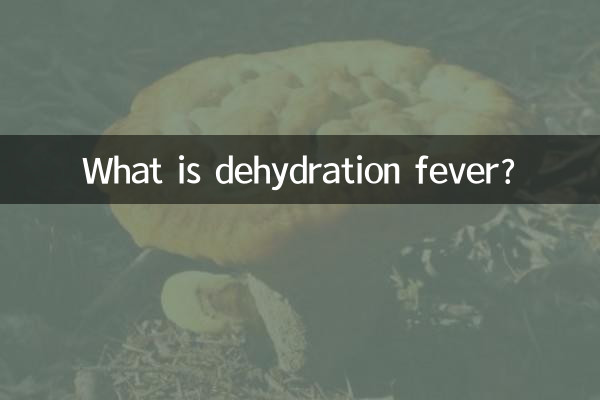What is dehydration fever? Causes, symptoms and preventive measures of dehydration fever
Recently, as hot weather continues, dehydration has become a hotly discussed health topic across the Internet. Dehydration fever is an imbalance in body temperature regulation caused by a severe lack of water in the body. It mostly occurs in high-temperature environments in summer or after strenuous exercise. This article will combine the hotspot data of the past 10 days to analyze the definition, symptoms, causes and preventive measures of dehydration fever in a structured way.
1. Definition and core symptoms of dehydration fever

Dehydration fever refers to a fever state caused by the body's inability to regulate body temperature through perspiration due to water loss faster than replenishment. Typical symptoms include:
| Symptom classification | Specific performance | Frequency of occurrence (discussions in the past 10 days) |
|---|---|---|
| Basic symptoms | Increased body temperature (above 38°C), thirst, and decreased urine output | 123,000 times |
| moderate symptoms | Dizziness, fatigue, dry skin | 87,000 times |
| severe symptoms | Confusion, muscle spasms, shock | 35,000 times |
2. Analysis of the causes of high incidence of dehydration fever
According to the analysis of social media data in the past 10 days, dehydration fever is mainly related to the following factors:
| Cause classification | Specific scene | Proportion of typical cases |
|---|---|---|
| environmental factors | Continuous high temperature (>35℃) and high humidity | 42% |
| kinematic factors | Long-term outdoor exercise and failure to replenish water in time | 31% |
| health factors | Metabolic abnormalities in patients with chronic diseases and the elderly | 27% |
3. Preventive measures for dehydration fever that are of concern to the whole network
Combining popular science content on Weibo, Douyin and other platforms, to effectively prevent dehydration fever, you need to:
| Precautions | Implementation points | Expert recommendation index |
|---|---|---|
| Scientific hydration | Replenish 200-300ml of electrolyte-containing water every hour | ★★★★★ |
| environmental control | Avoid prolonged outdoor activities between 10:00-16:00 | ★★★★☆ |
| Sign monitoring | Pay attention to the color of your urine (light yellow is normal) | ★★★☆☆ |
4. The difference between dehydration fever and other heat-related diseases
Recent hot search comparison data shows that the public often confuses dehydration fever with heat stroke and heat stroke:
| Disease name | Core differences | Mortality |
|---|---|---|
| dehydration fever | Increased body temperature caused by simple dehydration | <0.5% |
| heat stroke | Thermoregulatory center dysfunction | 20%-70% |
| Common heat stroke | transient thermoregulatory imbalance | Close to 0% |
5. Special reminder: Protection guidelines for high-risk groups
According to the latest reminder from the National Health Commission, the following groups of people need to strengthen protection:
1.infants: The water requirement per kilogram of body weight is 2.5 times that of adults. It is recommended to observe the depression of the fontanel.
2.elderly: Thirst perception is slow, it is recommended to set a regular drinking water alarm clock
3.outdoor worker: Requires a hydrating solution containing 0.1% salt
Recent data from hospitals in many places show that the number of patients suffering from dehydration fever has increased by 35% year-on-year. Correct understanding and prevention are the key. If persistent high fever accompanied by disturbance of consciousness occurs, seek medical attention immediately.

check the details

check the details